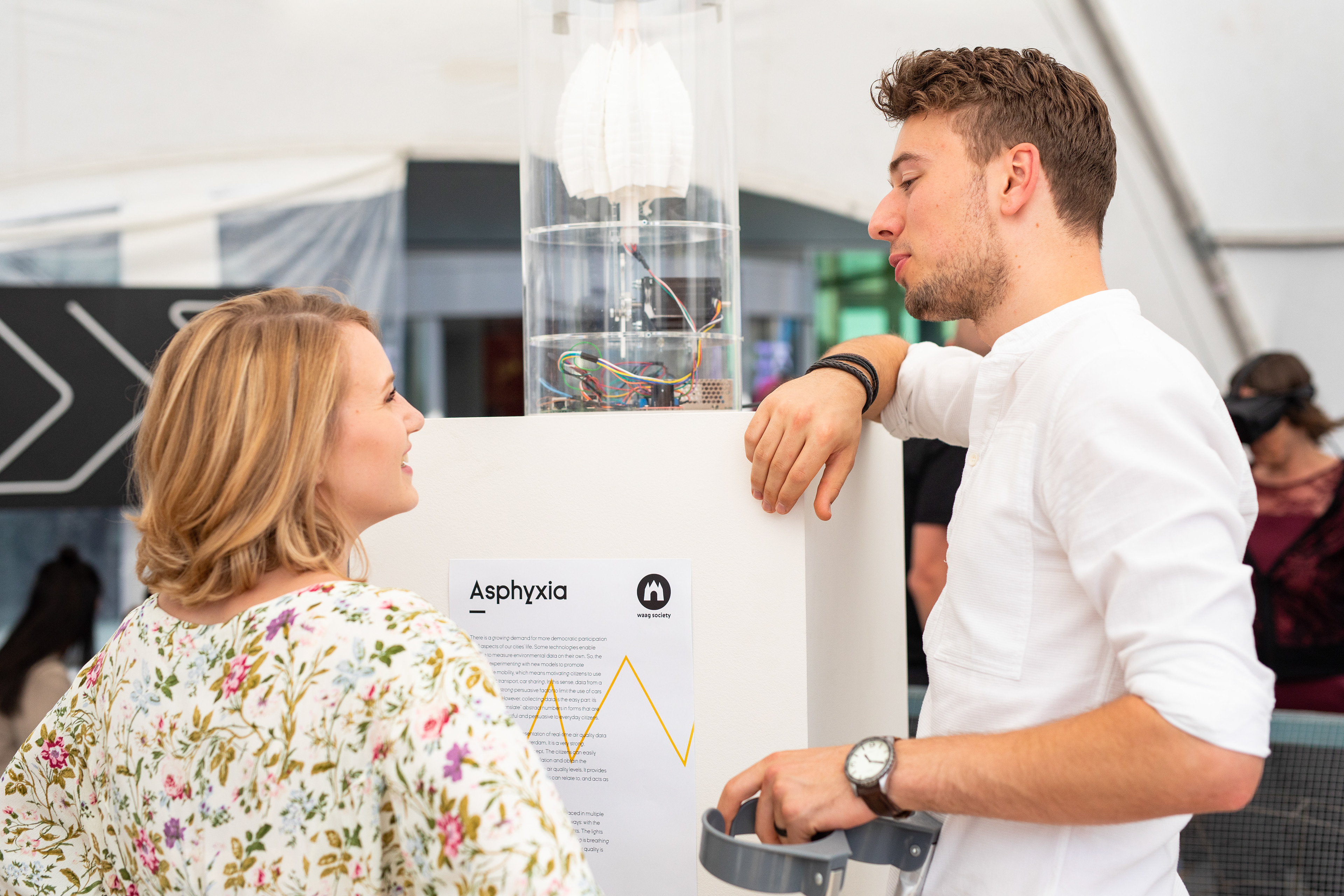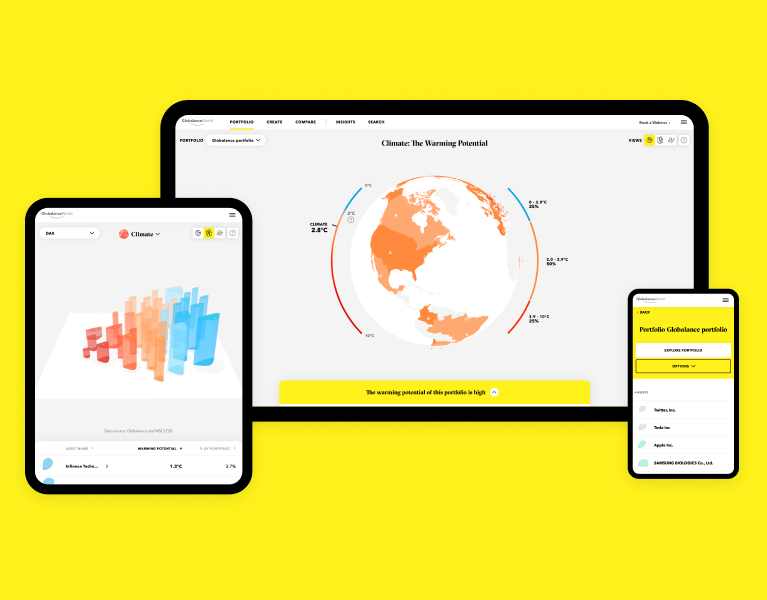Responsibilities: Technical implementation, concepting
Client: The Waag Society Amsterdam
Duration: 8 weeks (version 1) + 4 weeks (version 2)
This project was done during the master Digital Design
The Waag Society in Amsterdam wants to enable people to measure environmental data on their own by creating a network of simple sensor kits and deploying bigger sensor stations. These sensors can measure all sorts of interesting environmental data, like air quality, noise pollution, traffic, routes taken and more. However, collecting data may be the easy part: it’s necessary to “translate” abstract numbers in forms that are meaningful, impactful and persuasive to everyday citizens - not only specialists. But also, to make it understandable to the broadest variety of citizens, including seniors, undereducated people, non-Dutch speakers, and other underserved minorities.
This brought us to the challenge: How can we visualize data regarding air pollution coming from the sensor kits from the smart citizen project, in a way that it is meaningful & understandable to everyday citizens living in MUV cities?
We got the freedom from our client to experiment with different ways of visualizing the data. The motto of this project was to create as much as possible, try things out faster and fail even faster.
After gathering the needed inspiration, we started brainstorming through an inspiration card workshop and through materials. However, our client advised us to look into movement to see what would be an interesting movement to visualize data. That’s why we started creating moving objects, using nature as our main inspiration.
Two objects really caught our eye, a “reversed” umbrella mechanism that resembles an opening and closing flower and a breathing lung (created through a science tutorial that shows how the respiratory system works). We further explored these directions by experimenting with different materials.
We struggled to find a way to make the lungs breathe mechanically, but it turned out the answer was right in front of us. By using the umbrella mechanism and attaching an origami piece we created earlier in the process to it, we created a moving paper lung. This shape created a breathing organism that was more abstract and open to interpretation, which made it less likely to become scary.
We decided to use a stepper motor and attach a wheel to it to use rotary to linear motion. I worked on creating the code that would drive the stepper and create a breathing motion in different speeds. For the breathing motion, I wanted the speed of the stepper to change during one round to make the motion resemble real breathing more.
In this video we show our process how we got to our first version of the prototype.
We decided we wanted to show an improved version Asphyxia on the Outburst festival in Amsterdam, a version that could work without being attached to a laptop and that visitors could interact with. We also changed some of the materials to make the prototype stronger and more resilient.






